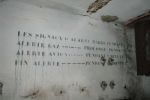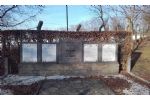Embourg Fort
- 10
- See on map
The Fort d'Embourg is one of the 12 forts making up the fortified position of Liège at the end of the 19th century in Belgium. It was built between 1888 and 1892 to the plans of General Brialmont. Unlike the French forts built during the same period by Raymond Séré de Rivières, it was built entirely of unreinforced concrete, a new material for the time, rather than masonry. The fort was heavily bombed in the First World War during the Battle of Liège, as well as at the start of the Second World War. It has now been preserved as a museum. The fort is located around 7 kilometers southeast of the center of Liège, on the heights near the locality of Beaufays, overlooking the Vesdre valley.
The fort forms an irregular rectangle, contrasting with the majority of forts built by Brialmont, which were more triangular in shape. A moat 6 meters deep and 8 meters wide surrounds the fort. The main armament is concentrated in the central massif. The ditches were defended in enfilade by 57 mm rifles arranged in casemates in the counterscarp wall. The fort is one of the smallest in Liège. The fort is higher in elevation relative to the surrounding area than most Liège forts, overlooking the Ourthe and Vesdre valleys and controlling the road from Liège to Spa.
With the exception of Fort de Loncin, Belgian forts had few provisions to support the daily stewardship of a garrison in wartime. What's more, the latrines, showers, kitchen and mortuary were located in the counterscarp, an untenable position in battle. This would have important consequences for the forts' ability to withstand a prolonged assault.
The service area was placed directly opposite the barracks, which opened onto the ditch at the rear of the fort (towards Liège), with less protection than the 2 side ditches. The rear of the Brialmont forts was more lightly defended to facilitate recapture by Belgian armed forces.
The barracks and common quarters were also located on this side, with the rear ditch providing natural lighting and ventilation. In battle, artillery fire made the ditch untenable, and Germans who were able to pass between the forts could attack them from the rear. Originally, the armament of Fort d'Embourg included for long-range targets a Grüsonwerke turret with a 21 cm Krupp gun, a Creusot turret with 2 15 cm guns and a Châtillon-Commentry turret carrying 2 Krupp guns. For close defense, it had 4 Grüsonwerke turrets with a 57 mm gun. The fort also had an observation turret equipped with a searchlight. 9 rapid-fire guns equipped the casemates protecting the ditches and the postern The fort's heavy artillery consisted of German guns of the Krupp make, while the turrets came from a variety of origins.
Communication between the neighboring forts of Loncin and Liers could be achieved by means of light signals. The cannons used black powder, which produced asphyxiating gases that spread throughout the fort's confined spaces.
Photos: Alain Walthery
Source: wikipedia






